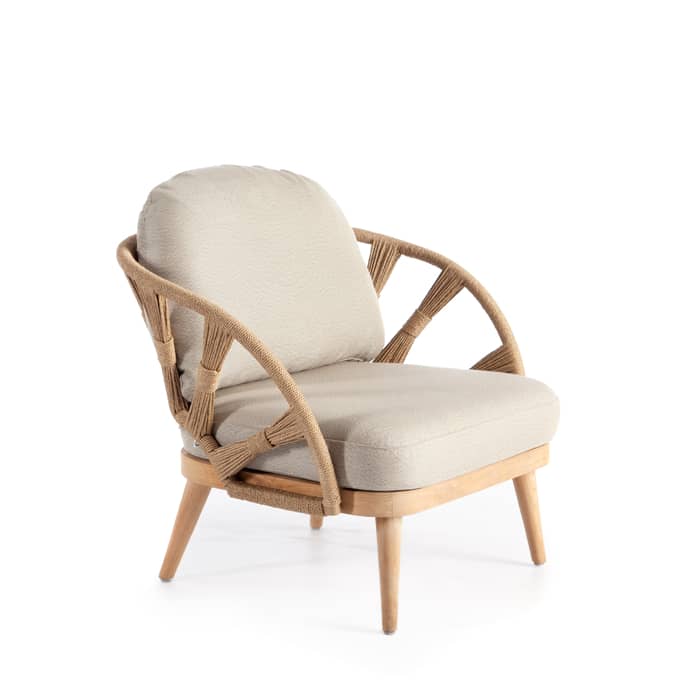Chaise Lounge Nardi Omega
Chaise Lounge Nardi Omega
Chaise Lounge Nardi Omega sin brazos con estructura tubular de resina y tejido sintético transpirable. El respaldo se puede ajustar en cuatro posiciones. Disponible en varias combinaciones de colores de marco/tela. Apilable.
Product features
Product features
Especificaciones:
- Altura del asiento: 15” (38 cm)
- Longitud: 76,5” (194,5 cm)
- Ancho: 27,16” (69 cm)
- Peso del producto: 29,7 libras. (13,5 kilogramos)
- Apilable
- Producto probado por CATAS
Maintenance & Cleaning
Maintenance & Cleaning
Woven Wicker Material Properties
Skyline Design woven furniture is crafted using a High-Density Polyethylene (HDPE) plastic material. This
material offers practicality and a soft touch, accompanied by numerous benefits such as excellent flexibility, tear resistance, UV resistance, and weather resistance. The colored material is shaped through extrusion using a specialized die, resulting in the final fiber shape. The woven wicker produced through this process is not only completely weatherproof but also colorfast, highly durable, and easy to clean. It exhibits resistance to chlorine, saltwater, tanning lotions, and oils. Skyline Design employs a textured and thicker type of wicker, setting it apart from other manufacturers. Although more challenging to weave, this wicker variety
boasts superior strength, resistance to tension, tearing, and splitting, and provides a more natural feel to
the product. The foundation of the woven furniture is constructed using a fully welded, powder-coated aluminum frame. After welding, the entire frame undergoes an electro-static powder coating process, resulting in a tough and smooth finish that matches the color of the wicker. This meticulous approach ensures the frame is fully protected against corrosion and virtually invisible once the wicker is woven over it. The woven furniture is designed to withstand outdoor conditions year-round and can endure temperatures ranging from -20°C
to +55°C (-4°F to 131°F). During very cold temperatures, the weave may become stiffer than usual, while
during extreme heat, it may become more elastic. However, the weave always reverts to its normal elasticity once the ambient temperature stabilizes.
Woven Wicker Cleaning
We highly recommend regular cleaning of woven furniture using a solution of mild detergent diluted at a
ratio of 1 part detergent to 16 parts lukewarm water (below 100°F/40°C). Begin by thoroughly soaking the
wicker with the cleaning solution and gently agitate it using a soft bristle brush to remove any embedded
dirt. Once adequately cleaned, rinse off the cleaning solution using cold water. It is permissible to use
a pressure hose on a low setting for woven furniture, but exercise caution around any teak components,
as high-pressure water can damage the timber surface. To ensure optimal cleanliness, it is essential to
eliminate all traces of foam from the wicker. Any remaining foam residue in the gaps between the weave
can attract dirt. Additionally, promptly dry any water splashes on metal or teak frames to prevent water
stains from forming.
Woven Wicker Repairing
If scratch marks or abrasions appear on the edges of the fiber, you can attempt to repair them by briefly and
cautiously applying heat, such as using the flame of a cigarette lighter, to the affected area. After applying
heat, gently rub along the length of the fiber with a piece of hard cardboard to restore a smooth edge. It is
crucial to exercise caution during this procedure as it can be challenging to perfect. To ensure successful
results, we recommend conducting a couple of test runs on a hidden area of wicker, such as the underside
of the furniture. If fibers are accidentally cut or broken, repairs can generally be made by carefully removing
the broken section of wicker and skillfully weaving in a new strip.
Aluminum Material Properties
Aluminum is a lightweight and durable metal known for its excellent strength-to-weight ratio and corrosion
resistance, making it an ideal material for outdoor furniture. The aluminum used in the furniture is coated
with a powder coat finish, applied through an electro-static process. This application method ensures
complete coverage of the metal’s surface and results in a consistent and durable finish that surpasses
traditional paint finishes. The powder coat finish is highly resistant to knocks and scratches, impervious to
moisture, highly corrosion-resistant, and easy to clean.
The powder coating process involves a thorough pre-treatment procedure. Initially, the material is sanded
using abrasive paper, similar to how wood is sanded. Next, the frames and components undergo a series
of chemical baths to clean and degrease the metal. The corrosion resistance of the aluminum is further
enhanced through a pre-treatment step involving a chrome conversion coating, which deposits a thin
layer of chrome on the surface. Subsequently, the powder coat, typically made of polyester, is applied
using electrostatic spraying equipment. A thin layer of powder is evenly deposited over the entire frame,
after which the frame is placed in an oven at around 200°C (392°F) for 15-20 minutes, depending on the
component’s size. The advantage of using powder coat over traditional paint finishes lies in its hardness and the ability to achieve a thicker coating. Additionally, the powder coat process does not involve solvents. However, one disadvantage of powder coat compared to liquid paint finishes is the difficulty in repairing any damages. It is challenging to perfectly match the appearance of the original powder coat with a repair made using liquid paint.
Aluminum Cleaning
Powder-coated aluminum furniture generally requires minimal maintenance. To keep it clean, simply use
water and a mild liquid detergent to gently remove dirt or splashes. You can use a microfiber cloth or
sponge to wipe the surfaces of the furniture. After cleaning, it’s advisable to remove any surface water
using a drying cloth, similar to what you would use on a car, to prevent water spots from forming. It’s
important to avoid using abrasive cleaning agents or materials as they can potentially mark the surface of
the powder coat. Additionally, refrain from using steel wool or Scotch-Brite on powder-coated surfaces, as
they can cause damage.
Share


